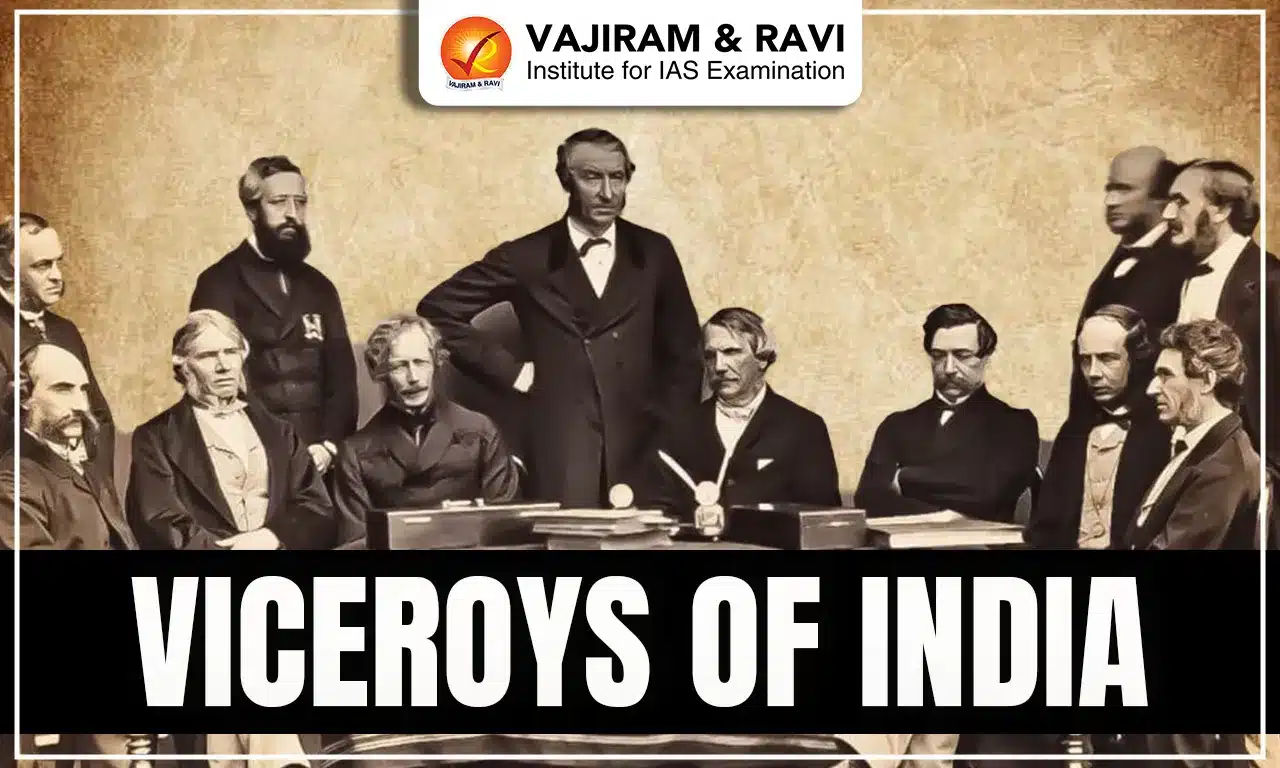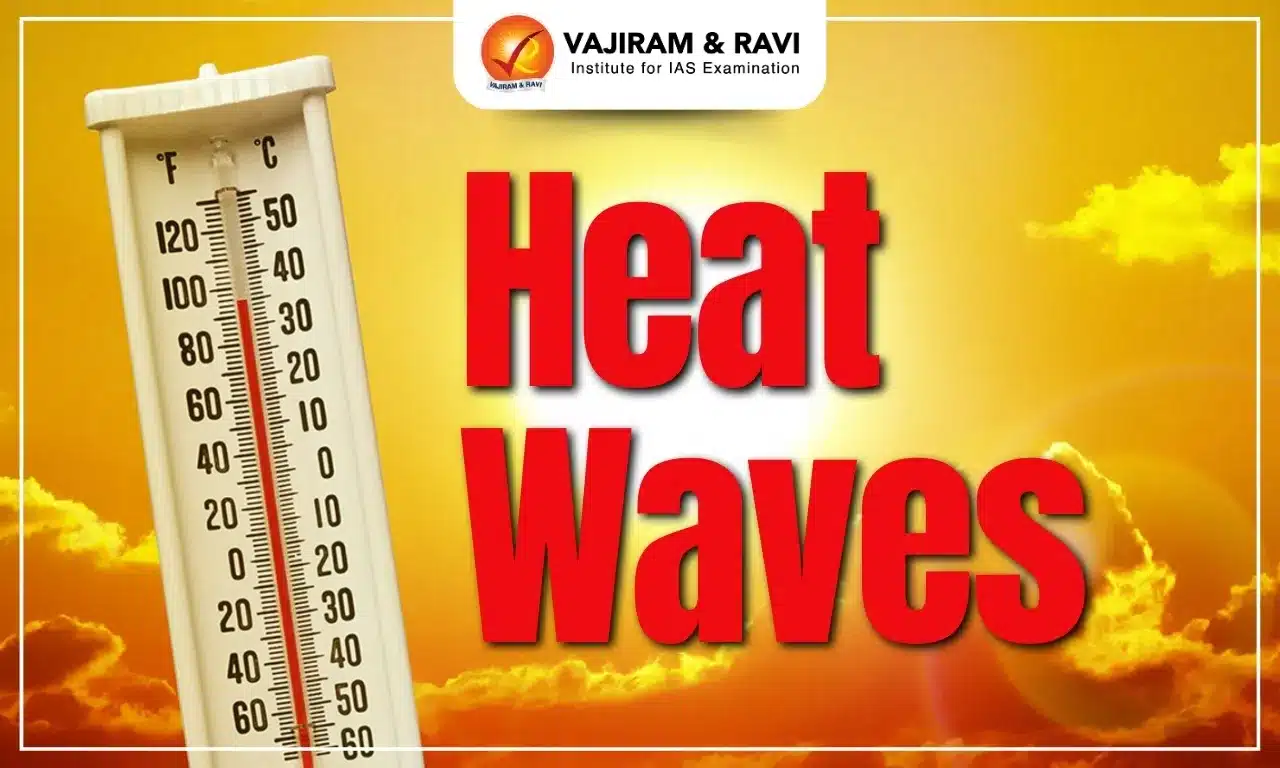After the 1857 battle, the British government, having observed mismanagement by the East India Company, decided to appoint a representative head to oversee the governance of the region. As a result, the British introduced the Government of India Act 1858.
The act established two offices:
- Secretary of State of India: Who was assisted by a Council of 15 members, which had an advisory role, and the secretary acted as the channel of communication between the British government and Indian administration.
- Viceroy of India: The Governor General/Viceroy, appointed by the Crown, represented the British government in India and was assisted by an Executive Council.
Viceroys of India
The viceroys of India, were appointed by the British monarchy as representatives to govern British India, following the title's introduction in 1858 after the Revolt of 1857, which led to the end of the rule of the East India Company and the beginning of direct British rule over India.
| Name of the Viceroy | Notable Work and Events |
| Lord Canning (1858 - 1862) |
-The introduction of the Indian Penal Code in 1860, replacing English Criminal Law, and the Civil Procedure Code of 1859 and Criminal Procedure Code of 1861, which regulated court procedures in civil and criminal matters.
|
| Lord Elgin-I (1862 - 1863) | -Experienced the Wahabi Movement, which involved the suppression of the fanatic Muslim tribe known as the Wahabis. |
| Lord Lawrence (1864 - 1869) |
-Established the Indian Forest Department and introduced a telegraph line connecting India with Europe.
|
| Lord Mayo (1869 - 1872) |
-He was the sole Viceroy to be assassinated while in office.
|
| Lord Northbrook (1872 - 1876) | -The removal of the Gaikwad of Baroda in 1875, the Prince of Wales's visit, the Bihar Famine, and the Kuka Movement in Punjab were notable occurrences during his reign. |
| Lord Lytton (1876 - 1880) |
-He gained notoriety as the most infamous viceroy in India.
|
| Lord Ripon (1880 - 1884) |
-Known as the most liberal Lord, he sympathised with Indians and earned the title of "Father of Local Self-Government in India."
-The Provincial Government divided revenue sources into three groups: Centre, Provincial, and those to be shared between the Centre and the Provinces.
|
| Lord Dufferin (1884 - 1888) |
-Witnessed the establishment of the Indian National Congress in 1885.
|
| Lord Lansdowne (1888 - 1894) |
-The Indian Council Act of 1892 brought an increase in the number of Indian Representatives in the government, allowing them to discuss the budget but without the right to vote on it.
|
| Lord Elgin-II (1894 - 1899) |
|
| Lord Curzon (1899 - 1905) |
-The Bengal Province was divided into two parts, Bengal and East Bengal, in 1905.
|
| Lord Minto-II (1905 - 1910) |
-His reign is marked as the "Era of Great Political Unrest" in India.
|
| Lord Hardinge-II (1910 - 1916) |
-The annulment of the Partition of Bengal in 1911 was done to suppress revolutionary activities.
|
| Lord Chelmsford (1916 - 1921) |
-The Government of India Act 1919, also known as the Montagu-Chelmsford Reforms, introduced constitutional reforms and the concept of "Diarchy" or dual administration in India.
|
| Lord Reading (1921 - 1926) |
-The Rowlatt Act was repealed.
|
| Lord Irwin (1926 - 1931) |
-The Gandhi-Irwin Pact of a compromise between Gandhi and Lord Irwin was concluded.
|
| Lord Willingdon (1931 - 1936) |
-Introduction of the Government of India Act, 1935.
|
| Lord Linlithgow (1936 - 1944) |
-Viceroy of India with the longest reign.
|
| Lord Wavell (1944 - 1947) |
-The "Wavell Plan" aimed to achieve a balanced representation of all Indians and resolve the constitutional deadlock in India caused by the Muslim League's demand for Partition.
|
| Lord Mountbatten (1947 - 1948) |
-Lord Mountbatten served as the last Viceroy of British India and later became the first Governor General of independent India.
|
Last updated on November, 2025
→ Check out the latest UPSC Syllabus 2026 here.
→ Join Vajiram & Ravi’s Interview Guidance Programme for expert help to crack your final UPSC stage.
→ UPSC Mains Result 2025 is now out.
→ UPSC Notification 2026 is scheduled to be released on January 14, 2026.
→ UPSC Calendar 2026 is released on 15th May, 2025.
→ The UPSC Vacancy 2025 were released 1129, out of which 979 were for UPSC CSE and remaining 150 are for UPSC IFoS.
→ UPSC Prelims 2026 will be conducted on 24th May, 2026 & UPSC Mains 2026 will be conducted on 21st August 2026.
→ The UPSC Selection Process is of 3 stages-Prelims, Mains and Interview.
→ UPSC Result 2024 is released with latest UPSC Marksheet 2024. Check Now!
→ UPSC Prelims Result 2025 is out now for the CSE held on 25 May 2025.
→ UPSC Toppers List 2024 is released now. Shakti Dubey is UPSC AIR 1 2024 Topper.
→ UPSC Prelims Question Paper 2025 and Unofficial Prelims Answer Key 2025 are available now.
→ UPSC Mains Question Paper 2025 is out for Essay, GS 1, 2, 3 & GS 4.
→ UPSC Mains Indian Language Question Paper 2025 is now out.
→ UPSC Mains Optional Question Paper 2025 is now out.
→ Also check Best IAS Coaching in Delhi
List of Viceroys of India FAQs
Q1. Who was the last Governor-General of Free India? +
Q2. Who is a Viceroy?+
Q3. What were the duties of a Viceroy?+
Q4. Who was the Viceroy During uit India Movement?+
Q5. How Many Viceroys of India Were There?Q) How Many Viceroys of India Were There?+

















